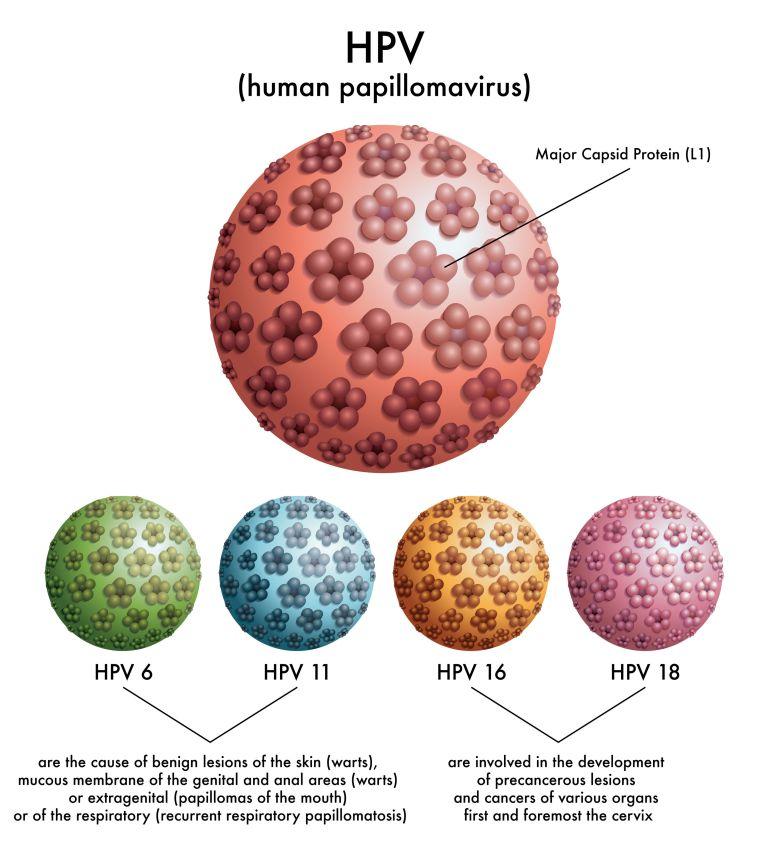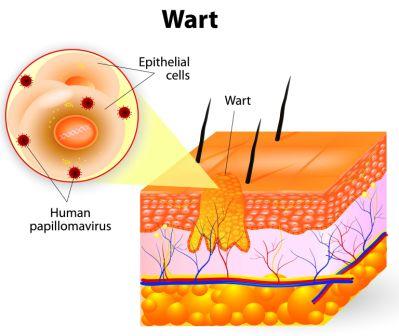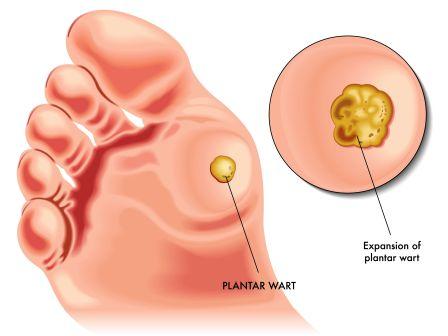Warts: Ayurvedic Treatment, Remedies, Prevention Tips
Warts are the simple, non-malignant growths, usually caused by virus. Its incubation period will be in the range of 3-4 months. This means, the virus, once inside the body can take up to 3 – 4 months time to show up warts. It may affect any part of the body.
Table of Contents
Virus
Virus and spreading of warts
Warts are caused by filterable virus called Human Papilloma Virus – HPV 6 and 11.
Filterable means, a virus particle small enough to pass through a filter of diatomaceous earth or porcelain. It may spread from one part of the body to another within the individual.
Warts are caused by filterable virus called Human Papilloma Virus – HPV 6 and 11.
Filterable means, a virus particle small enough to pass through a filter of diatomaceous earth or porcelain. It may spread from one part of the body to another within the individual.

But, spread of the diseases from one to another is rare, as the skin surface does not allow for the lodgment of the virus in the individuals with good immunity. Having said that, it may spread from one to another with long skin contacts.

Warts in Ayurveda
In Ayurveda warts are called Charmakeela.
Charma means skin and
Keela refers to growth or eruption.
Types of warts
Depending upon the nature of the warts they are classified as below,
A) Verruca vulgaris (common warts):
Most common types of warts.
Usually skin coloured or brown coloured with irregular shape and surfaces.
Common sites: Arm, forearm and face.
B) Verruca plana (flat warts, plane warts):
They are also found in skin colour only. But they are flat trapped papules possessing little elevation. Backside (dorsal aspect) of the arm and fore arm are the common sites of this.
C) Filiform warts:
These are finger like projects. Face and neck are the common areas of this varieties of warts. They appear in multiple numbers.
D) Plantar warts:
Plantar warts are larger in size and they appear usually in the base of the foot (sole). In due course of time they become painful.
E) Genital warts:
Affects genitals. In the medical terms they are called Condylomata acuminata. In male, in the area of glans penis and in female in vulva it is originated. These warts grow and spread faster than any other kind of warts. Sexual contact usually spreads this kind of viral warts.
F) Seborrhoic warts:
Flat, and dark brown in colour. These appear in face and old aged people are commonly affected by these.
G) Juvenile warts:
Found only in children. They are flat and found near the genital organs. Associated with bad odour.
H) Verruca necregenica:
These are red or pink coloured dark papules. Gradually they are converted into pus filled warts/blisters (pustules). After the pus discharge the elevated growths will be stable in the body part for longer period.

Ayurvedic treatment for warts
Vata- Kapha Dosha balancing treatments are adopted.
A combination of oral Ayurvedic medicines along with topical application of ointments or herbal powder mixes is advised.
External application:
It is best to undergo these therapies under the care of an Ayurveda doctor.
It is advised to do this only once per day.
The below applications work well when the wart area is made moist and the top layer of dead skin is scraped out under sterile conditions. (Disinfectant liquid like dettol / savlon can be applied to the affected area).
Do not scrape the warts till it starts bleeding. Bleeding may cause spread of warts to the adjacent areas.
You can use pumice stone or nail shaper for scraping. Be gentle, be careful.
Avoid these in case of genital warts or warts on lips etc, consult a doctor.
Avoid these on pregnant mothers and children and consult a doctor.
Whenever excess scraping leads to bleeding, apply dettol or savlon immediately.
External remedies
1. Six C ointment – an Ayurvedic ointment with purified sulphur, zinc, neem oil, Karanja oil etc. Available in Ayurveda stores or even in online.
This ointment can be applied 2 – 3 times a day.
After application, it can be left over the place for as long as possible. At night, you can apply and leave it overnight. This works best with Oral Ayurvedic medicines that are explained below.
2. Tankana bhasma is mixed with lemon juice and fine paste is made and applied over the warts.
Take 3 grams of Tankana Bhasma in a stainless steel spoon. Add half a teaspoon of lemon juice (available in any Ayurveda medical store) to it. Apply this paste over the wart region. You can use the end part of another spoon to apply it. Do it once a day. Be careful not to apply it to other parts of skin, as it may cause burning sensation. Wash it off after 5 minutes. (Learn more about Tankan Bhasma)
3. Yavakshara and Saindhava lavana – Rock salt are taken in equal quantity and fine powder is made. To this, cow’s urine is added and fine paste is made. While mixing, dehydrated lime powder is also added. This is placed over the wart and bandaged with a cloth. This is done daily for 15-21 days. Warts soften and reduced by this.
The above two should not be practised if the warts are formed in genitalia or vital area like eyes, lips etc
4. Take any kshara powder – such as yavakshara, Kalyana Kshara, Palasha kshara etc. Apply it on the duct tape bandages (such as hansaplast, band aid etc). Apply such duct tape over the warts, leave it for 10 minutes and remove the duct tape.
Oral Ayurvedic medicines
1. Kanakabindu arishta-Acts as antiviral; viricide medicament too.This purifies the blood and possesses laxative effect.
2. Aragvadharishta -Laxative, blood purifier and free radical scavenging agent.
3. Khadirarishta-Well-known blood purifier.It has its role even in strengthening the muscles and blood tissues.
4. Gandhaka Rasayana– Well known and potent drug to strengthen the skin and connective tissues.
5. Rasamanikya-Anti viral and bactericidal drug of Ayurveda.
6. Arogyavardhini Vati-Potent Ayurvedic tablet to combat the skin diseases.
7. Chandraprabha Vati– Rejuvinative, revitaliser and immune-modulator.
8. Panchanimbadi Gulika – Has potent antiviral activity.
Prevention tips
How to prevent warts from spreading (or even occurring in the first place)
When the immunity is low, the virus attacks become more visible. This is the reason, warts are common in children, during pregnancy and in middle age people.
Keep your immunity at optimum levels with regular use of turmeric, curry leaves, ginger, black pepper, cinnamon, cardamom, Chyawanprash, etc.
Yoga and Pranayama keep your stress levels low, thereby immunity levels high. Learn a simple Pranayama technique
Regular exercise at least for 10 minutes a day is good for immunity.
Always maintain hygiene. Wash your hands at regular intervals.
Do not share your razors.
Don’t share towels, socks, or shoes with others.
Keep separate shaving blades for face, underarm and pubic hairs. Do not use one common shaver for all purposes. Keep on changing the shavers regularly.
Do not pluck at the warts repeatedly. You will end up spreading the infections to nearby areas.
In case of plantar warts (on the foot), apply bandage or athletic tape and change it daily. This prevents warts from spreading.
Surgical treatments:
Cauterisation, or minor surgical procedures are adopted if the oral medicines and external application do not yield results.
Verruca necrogonica — is a rash of small, red papular nodules in the skin that may appear 2–4 weeks after inoculation by Mycobacterium tuberculosis in a previously infected and immuno competent individual. The literal meaning being generated by corpses meaning that it can be spread from an individual having a tuberculin bacteria within him mainly seen in Butchers, Pathologists etc.,
The other name of Plantar warts are Verruca that develop on plantar surfaces — that is, the soles (or bottom) of the feet.Verrucas are caused by a virus that invades the skin through tiny cuts or scrapes. It can take some weeks, or even months, for a verruca to appear after you have caught the infection.
Corns on the other hand are hard, thickened areas of skin that form as a consequence of friction, rubbing or pressure on the skin. Usually, simply eliminating the source of friction or pressure allows corns to heal.
Remedies for corn
Some simple home remedies you can follow are:
> Add two to three tablespoons of baking soda to a basin of warm water. Soak your feet in this solution for 10 to 15 minutes. Rub the affected area with a pumice stone to remove the dead skin.
> Apply fresh lemon juice on the corn and allow it to air dry. Do this at least three times daily.
> Cut two to three garlic cloves into small pieces, add a pinch of salt and then make a paste of it. Apply the paste on the corn, secure it with an adhesive bandage and leave it on for three days. On the third day when you remove the bandage, the corn will also come off. If needed, repeat the process.
> Mix one teaspoon of turmeric power and a little honey to make a thick paste. Apple the paste on the corn and allow it to dry on its own. Repeat two or three times a day for at least one week or until the corn comes out.
Regarding Genital warts: The genital area is too sensitive for many products and you could damage your skin. Instead, see your doctor, who may provide treatment or prescribe a drug for you to apply to the warts
Article by Dr MS Krishnamurthy.








29 comments on “Warts: Ayurvedic Treatment, Remedies, Prevention Tips”
Monique
Hi Dr, my daughter (27) had plantars warts last summer. We did go to dr for a few treatments. Now, one year later, they came back. She is getting treated again. Is this a normal occurance? Is it the case of the virus lays dormant, like the herpes virus an ccomes back? thank you
PRAGATI VERMA
You can try homeopathic treatment.. I also had multiple warts on my both arms and forearms since 7 years but now its all vanished.
You can try thuja Occidentalis 200- 2drops TDS
And antimonium crudum 200 – 2 drops TDS.
You can buy Dr. Reckeweg company.
Its really very effective.
PATTAN JAFFAR ALI KHAN
EXCELLENT ARTICLE ON WARTS AND THEIR TREATMENT.
T. Raghavan
Sir, please recommend a treatment for Corn. Planta warts/ verruca necregania & corn are they one & same?
Dr Malini Bhat
To remove a soft corn,Soak your feet in salted warm water for 5 – 10 minutes to make the area soft. Then, scrub the area gently with the help of a pumice stone or some other scrubber to rub off the dead skin. After this, apply a gently massage the foot with coconut or mustard oil.
Mix one teaspoon of aloe vera gel with one half teaspoon of turmeric and apply on the corn.
For chronic, hardened and persistent corns, you need advanced ayurvedic treatment by a physician.
Ram
Dr. Hebbar,
Need to understand about buying this Kankabindu arihsta in Banglaore or its equivalent
Is thuja ointment good for warts ?
I have this under arms pulpy warts hanging sometimes it is very itchy
please advice
Regards,
Ram
Dr J V Hebbar MD(Ayu)
Hi, if the warts are big, then getting them removed with electrosurgery makes sense.
Thuja ointment is good for warts.
preet
Hii sir I am preet.. I have warts since Oct. .i took medicine.. But when I left medicine they come again. .what should I do. .
Dr J V Hebbar MD(Ayu)
Better to consult a dermatologist and get them removed.
suraj
Mam my gf have wart on face it is day by day increase suggest how can removed it.
There wart is like (. dot ) there wart colour is same as skin colour, its no pain but increase.
If you know about any tube available in market or any easy type of home treatment please tell me.
My family don’t agree for our relationship due to face wart
I hope you can understand our problem and I also depend on you
Aman Goyal
Hello sir,
I have warts on my scalp. I want to remove them but dermatologist said after removal from scalp hair roots of that area would be permanentaly damaged and i had 3-4 warts and they are spreading. So is there any solution apart from electrosurgery
Rahul Patil
hello
i was having a wart under my eye and i removed that by wartosin ,which i bought from medical stores.the wart get removed but it left a black big mark on my face.so what is the remedy for that please suggest
Dr J V Hebbar MD(Ayu)
It is lemon spoon. Sorry for the mistake. Now corrected. 🙂
Kavita
Hello Sir,
I have started using Six C ointment. How many days will it take to remove off facial warts?
Thank you.
Dr J V Hebbar MD(Ayu)
Hi, the six c is to be applied over the wart after washing face and removing the top most skin layer, without bleeding. After applying, you will have tingling sensation. If these conditions are met, it may take 2 – 3 weeks to get rid of it.
I cannot promise the claims though.
Ashish
Plain warts or flat warts on face..pls suggest remedies .
Even after RF treatment it’s reappearing at same place . Pls suggest doctor what shud I do.
Pls mail me on Thanks and regds.
Dr J V Hebbar MD(Ayu)
Continuously apply Six C ointment over the warts, after bath or face wash, everyday. Once or twice a day for 3 months time.
Ashish
Thnaks you so much doctor for your quick response . I really appreciate sir .
Fine sir I will follow what u said .
Regds
Ashish
Dr J V Hebbar MD(Ayu)
It is difficult to tell. It is better to apply soon after bath, when the wart skin is soft. Try gently to remove the soft skin and then apply it for better effect.
Sravani
I have warts in some place like waist, cheek, under eye and nose. I want to remove that without any scars on those parts. Please suggest me
Chandima Madhumalika
Sir,
How can we treat for scalp warts?
Dr J V Hebbar MD(Ayu)
Very difficult to treat. Better to undergo electrocautery therapy.
vijay
hi ,
i have falt warts on my leg,hand and into the finger nail.so please suggest me.which medicine to take cure as soon as.bcz it’s spread my leg and hand.
Beula
Hi dr
My daughter is about to turn 7years. She is having warts near her nails. What will be the perfect combination of internal and external medicines? And if it’s because of low immunity, how to increase the immunity? Thanking you in anticipation…
Dr J V Hebbar MD(Ayu)
Six C ointment can be useful but may cause eye irritation.
Dr J V Hebbar MD(Ayu)
Hi, it “should” not affect the conception.
Minal Hadda
What medicine should I use for Plantar wart. I have it since 2 years. Will Wartosin help.
Sahil Verma
Hi sir,
Sir I have warts on my neck .They are 9-10 in number. One is big and multiple threads are comming out of this.It was developed 2-3 months ago. I havn’t gone to doctor.please suggest me the best way.
Thank you
Mats Eklöf
Dear Doctor,
I have followed these comment for some time.
I had one big planar wart under the right foot for 17 years and many smaller warts on the left hand for some years.
About 6 months ago I took Sanjivani vati every day for some short duration of time (maybe 10 days) and also maybe important were Jvarhar Kwath and Amla juice sometime. All the warts is dead since many months and scars are almost completely invisible. The big one on right foot is also dead but it will take time before the scar is gone.
Only one very small wart on left hand is left from that time.
And shortly after they all disappeared one new wart appeared on right hand.
I am very happy about the foot, because now I can jump and run again after 15 years of pain. I can not think of any other reason why they all disappeared.
(Only the healed foot is actually important to me.)
How should I understand all this? Should I think that the two small remaining warts are of a different kind of virus that the body can not kill? The very small old wart on the left hand definitely looks different and it was never growing in size. The new wart on right hand, I am not sure what kind it is.